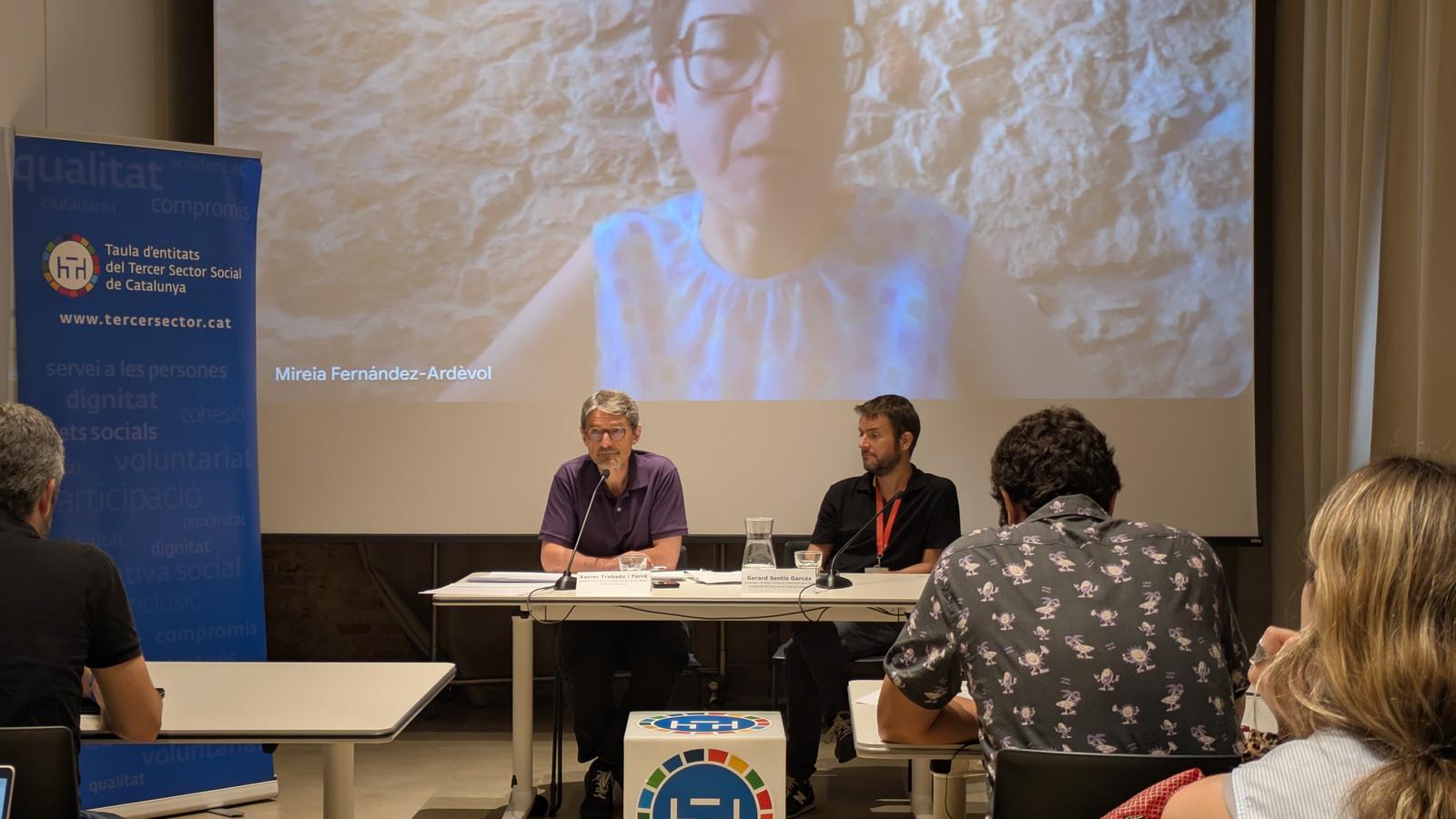The Third Social Sector Roundtable and the UOC develop the first Catalan digital divide index.
A pioneering indicator that uses data from public and private sources to better analyze the phenomenon and offer a more accurate and clearer view.

The Table of Entities of the Third Social Sector of Catalonia and the Open University of Catalonia (UOC), through the digital innovation project m4Social, have developed the first Catalan digital divide index, a pioneering indicator that, for the first time, uses data from both public and private sources thanks to the collaboration between civil society, public administrations, and the private sector.
This index is innovative because it provides a territorial and social snapshot of digital inequalities in Catalonia, analyzing the three key dimensions of the phenomenon—infrastructure, facilities, and digital uses—and their evolution, so that the indicator can be applied to other territories. Thus, the data—presented at a regional and Catalan level—allows us to identify where and how this phenomenon manifests itself, with the aim of promoting specific policies and actions to reduce inequalities in access to and use of digital services and helping governments, businesses, and social organizations assess the impact of their actions.
Connected but unequal in the use of digital services
Some of the most notable data from this report include, for example, that 5G coverage in Catalonia averages 94.6%, although territorial inequality must be taken into account. Despite this high figure from a territorial average perspective, rural and mountain areas still suffer a significant gap. For example, while in Barcelona, 5G coverage reaches 99.9% of the territory, in Alta Ribagorça, this percentage only reaches 20.3%.
If we delve deeper into these data, we see that the regions with the lowest population density or those located in mountainous areas, such as Alta Ribagorça, Terra Alta, and Pallars Sobirà, have the lowest levels of infrastructure, facilities, and use. In contrast, metropolitan and coastal regions, such as Barcelonès, Baix Llobregat, and Vallès Occidental, have the highest levels in all three indicators established in the study.
Another notable statistic is that 96.8% of the population between the ages of 16 and 74 regularly uses the internet. There are also data on the use of some services. For example, My Health, the Catalan Public Health System service that allows users to consult with professionals and complete procedures online, has a usage rate of 63.6%, while the eConsulta service drops to 20.4%. Meanwhile, online banking has a usage rate of 84.1%.
Despite this general overview, if we delve deeper into internet use by age group, people between 35 and 54 years old show the highest levels of digital service use. This figure drops significantly from age 65 onwards in almost all areas.
Thus, the report concludes that the way to reduce this digital divide is to focus efforts on making digital services more accessible and easier to use, and to inform and educate citizens to help them use them, as this is an essential right for all.
